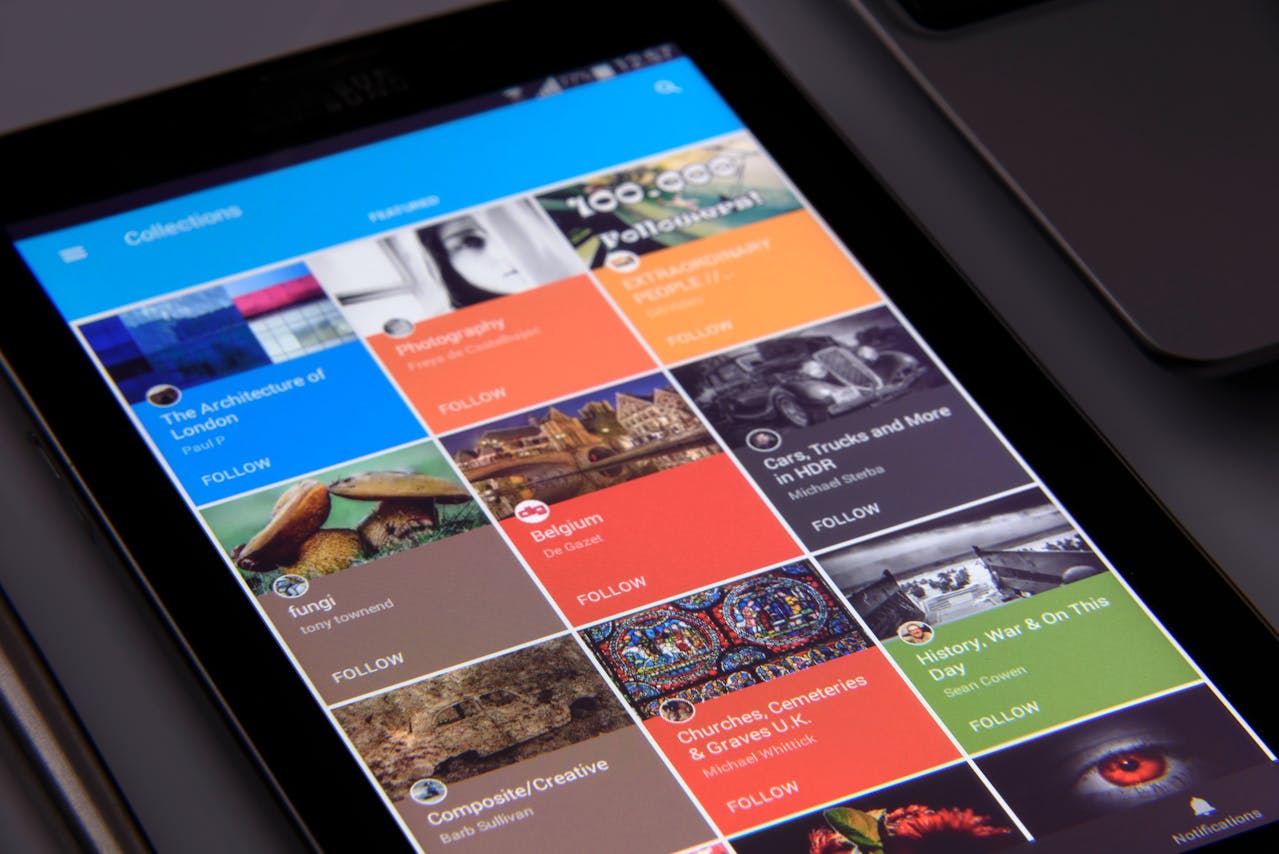In today’s digital age, determining what is true in the media has become a major challenge. With the rise of fake news and biased reports, it’s essential to equip oneself with critical thinking skills.
The modern media environment is often shaped by various agendas and interests. Platforms like social media can amplify misinformation, making it even harder to find the truth.
Engaging critically with media means questioning the sources, seeking diverse perspectives, and verifying facts before accepting them as truth.
Technology also plays a crucial role in both spreading and combating misinformation. Tools and algorithms can help identify fake news, but they are not foolproof.
Developing critical literacy is key to discerning truth from falsehood, enabling people to question and analyze media content effectively.
Key Takeaways
- Critical thinking is essential for navigating today’s media landscape.
- Questioning sources and verifying facts are crucial parts of media consumption.
- Technology aids in truth-finding but requires a critical, informed approach.
Foundations of Critical Thinking

Critical thinking is a skill that involves analyzing facts to form a judgment. It is essential for navigating misinformation and making informed decisions.
Defining Critical Thinking
Critical thinking is the practice of questioning, evaluating, and interpreting information logically. It aims to differentiate between facts and opinions, and to understand the evidence supporting a claim.
It’s not about being cynical or skeptical of everything but about being open-minded yet rigorous in seeking the truth.
Essential Critical Thinking Skills
There are several key skills involved in critical thinking:
- Analysis: Breaking down complex information into simpler parts to understand it better.
- Evaluation: Assessing the credibility and relevance of information sources.
- Inference: Drawing logical conclusions from available evidence.
- Explanation: Clearly articulating reasoning and evidence.
- Self-Regulation: Reflecting on one’s own beliefs and adjusting them when faced with new evidence.
These skills help individuals process information from various media sources critically and avoid being easily misled.
Logical Fallacies to Avoid
Logical fallacies can undermine critical thinking. Some common fallacies include:
- Ad Hominem: Attacking the person instead of the argument.
- Straw Man: Misrepresenting someone’s argument to make it easier to attack.
- Appeal to Ignorance: Arguing that something is true because it has not been proven false.
- False Dilemma: Presenting only two options when more exist.
- Slippery Slope: Suggesting that one small step will inevitably lead to a drastic outcome.
Understanding and recognizing these fallacies helps maintain logical consistency and clarity in evaluating information.
The Nature of Modern Media

Modern media has transformed significantly over the years, influencing how information is shared and consumed. This section covers key aspects like the evolution of information dissemination, the role of social media, and the impact of 24/7 news cycles.
Evolution of Information Dissemination
Information dissemination has evolved from traditional print media to digital formats. Initially, newspapers, radio, and television were the primary media sources. These outlets had editorial standards and longer lead times for news.
With the internet, information spread became instant. News websites and blogs allow for constant updates. The rapid pace sometimes leads to a lack of thorough fact-checking. It’s easier for misinformation to spread quickly.
The rise of citizen journalism has also changed the landscape. Individuals can now report and share news stories without the need for a traditional media platform. This democratization has benefits but also challenges, such as verifying the credibility of sources.
Role of Social Media
Social media platforms like Facebook, Twitter, and Instagram play a significant role in news dissemination. They provide users with a personalized news feed based on algorithms. This personalized content can create echo chambers, where users only see information that aligns with their viewpoints.
Social media also enables viral sharing. A news story can reach millions within minutes. This speed can lead to the spread of both accurate information and fake news. Platforms have started implementing fact-checking measures, but challenges remain.
Social influencers and celebrities also impact news consumption. When a person with a large following shares news, it can sway public opinion significantly. However, their credibility is often based on popularity rather than journalistic standards.
Impact of 24/7 News Cycles
The 24/7 news cycle means that news is constantly updated and available. This continuous flow of information can result in news being reported with less depth and more speculation. News networks might prioritize being first over being accurate.
This cycle can lead to viewer fatigue. The constant barrage of updates can be overwhelming and make it difficult for audiences to distinguish important news from trivial stories. The pressure to produce content quickly can sometimes lead to sensationalism.
Furthermore, this nonstop news environment can create a sense of urgency and anxiety. The constant need for new content means that some stories may be overblown or receive disproportionate attention. This environment makes critical thinking and media literacy essential for navigating news accurately.
Analyzing Media Content
Analyzing media content involves understanding how information is presented, identifying biases, verifying facts, and evaluating the credibility of sources. These skills are essential for discerning truth in the modern media landscape.
Identifying Biases
Media content often reflects biases, which can shape the presentation of information. Biases can be identified by paying attention to word choices, selective omission, and the framing of stories.
Tone and language can reveal an author’s or outlet’s leanings. For instance, emotionally charged words or one-sided perspectives are telltale signs.
Another way to spot bias is by comparing how different media outlets cover the same story. Look for inconsistencies or differences in emphasis. Monitoring diverse sources helps in identifying potential bias, providing a fuller picture of an event or issue.
Fact-Checking Techniques
Fact-checking is crucial for verifying the accuracy of information. One effective technique is cross-referencing multiple reliable sources.
Information that is consistently reported across well-respected platforms is more likely to be accurate.
Using fact-checking websites like Snopes or FactCheck.org can also help. These sites specialize in verifying claims and debunking falsehoods.
Additionally, looking for original sources, such as official statements or direct quotes, can confirm or refute the presented information. Scrutinizing dates and checking if the information is current is necessary to avoid outdated data.
Evaluating Sources
The credibility of a source is vital in assessing the reliability of information. Established media outlets with a history of accurate reporting are generally more trustworthy.
Peer-reviewed journals and academic publications also tend to provide reliable data.
Checking an author’s qualifications and affiliations can provide insight into their credibility.
It’s important to be wary of sources that lack transparency about their funding or have a history of spreading misinformation.
Websites with clear editorial standards and rigorous fact-checking processes are more reliable.
Evaluating sources implies not just looking at the text, but also considering the institution or individuals behind it. This scrutiny helps in distinguishing between credible information and potential misinformation.
Critical Thinking in Practice
Critical thinking skills are essential in evaluating modern media. Key points include applying critical thinking to news, navigating misinformation, and debunking pseudoscience.
Applying Critical Thinking to News
When assessing news articles, readers should question the credibility of the sources. This involves checking the author’s credentials, the publication date, and potential biases.
Reliable news sources often include citations from experts and provide balanced perspectives.
Fact-checking sites are useful tools to verify information. They help identify false claims and exaggerated statements.
Additionally, checking multiple reputable sources can provide a well-rounded view of the news event.
Critical media literacy courses, like the one at UCLA, focus on transforming education to critically use media. This approach aids in discerning between factual reporting and opinion pieces.
Misinformation spreads rapidly through social media and other digital platforms. Separating fact from fiction requires careful evaluation.
Analyzing the intent behind the information, such as whether it aims to inform or manipulate, is crucial.
Consider the language used. Sensational or emotionally charged words often indicate unreliable information.
Cross-referencing with established fact-checking organizations can help identify inaccuracies.
Buckingham’s work on teaching media in a post-truth age highlights the importance of media literacy education. This is especially relevant in an era where fake news and media bias prevail, making critical evaluation of content more essential than ever.
Debunking Pseudoscience
Pseudoscience presents itself as scientific but lacks empirical support. Identifying pseudoscientific claims requires looking for peer-reviewed sources that support the assertions.
Scientific studies with clear methodologies and reproducible results add credibility.
Be wary of claims that use scientific jargon without clear explanations. Reliable scientific information is usually transparent about its methods and limitations.
Research from Sage Journals emphasizes the role of language and communication in defining relationships of power and domination. Understanding this helps readers recognize when pseudoscience is used to push certain agendas or beliefs without solid evidence.
Developing Critical Literacy
Critical literacy involves understanding the power dynamics in media and questioning the authenticity of the information presented. It requires education, the promotion of media literacy, and fostering healthy skepticism.
Educational Frameworks
Teaching critical literacy should start with well-developed educational frameworks. Schools can integrate lessons on identifying bias, understanding media ownership, and recognizing persuasive techniques.
Critical Literacy in the Post-Truth Media Landscape emphasizes that educators must address power relationships and domination in media content.
Combining traditional and digital literacy approaches ensures students are prepared to analyze varied media formats. These educational efforts offer a foundation for lifelong media literacy skills.
Promoting Media Literacy
Media literacy programs aim to empower individuals to effectively evaluate information. Teachers can use current events, social media, and advertisements to showcase how to dissect media messages.
Critical Media Literacy in Teacher Education shows that using popular culture can make the learning process more engaging and relevant.
Educators should encourage critical questioning, helping students to differentiate between reliable and unreliable sources. These programs are vital in a media-saturated world.
Encouraging Skepticism While Avoiding Cynicism
Critical literacy isn’t just about skepticism; it’s also about avoiding cynicism.
Healthy skepticism involves questioning the source and motive behind information without becoming distrustful of all media.
What is Critical Media Literacy in an Age of Disinformation explains that this balance helps individuals remain open to new information while being discerning.
Teachers can model this balance by engaging with students in discussions that critique media content constructively. This approach builds a media-savvy populace capable of navigating the complex media landscape.
The Role of Technology in Truth-Finding
Technology plays a crucial role in how people discover and verify information in today’s media landscape. Understanding digital literacy, the influence of artificial intelligence, and the impact of algorithmic bias are essential for navigating modern media.
Digital Literacy
Digital literacy involves the skills needed to use digital tools and technologies to find, evaluate, and create information. It’s not just about using technology but understanding the context in which it is used.
Being digitally literate means recognizing credible sources from misinformation and understanding how to critically evaluate content.
This is crucial because the internet is flooded with vast amounts of data, making it challenging to distinguish between reliable and unreliable information. Furthermore, digital literacy encompasses knowing how to responsibly use and share information on social media platforms.
Artificial Intelligence and Media
Artificial intelligence (AI) significantly influences media by automating content curation, recommendation systems, and even generating news articles. AI technologies can help filter out false information and highlight credible sources.
For example, AI can analyze vast datasets to identify patterns and verify facts with impressive speed. It enables the detection of deepfakes and other manipulated media, playing a critical role in maintaining the authenticity of information shared online.
However, the effectiveness of AI relies heavily on the quality and diversity of the data it is trained on.
Algorithmic Bias and Filter Bubbles
Algorithmic bias and filter bubbles impact how information is consumed. Algorithms used by social media and search engines personalize content based on user behavior, often reinforcing existing beliefs and creating echo chambers.
This results in filter bubbles where users are exposed to information that confirms their views while excluding opposing perspectives. Such environments can limit critical thinking and make it difficult to encounter diverse viewpoints.
It is important for users to be aware of these biases and seek out a variety of sources to ensure a well-rounded understanding of the truth.
Visit Rethinking journalism standards for more on how news media acts as truth mediators. Check out Critical Literacy in the Post-Truth Media Landscape for insights on navigating media and finding truth. Gain a broader perspective on Social Media and the Post-Truth World Order. Explore the concept of Post-Truth and Critical Communication Studies for more details.
Frequently Asked Questions
Critical thinking helps to evaluate the credibility of news, identify bias, and navigate digital information effectively. Being media literate empowers individuals to discern the truth in modern media.
How can critical thinking be used to discern credibility in news reporting?
Critical thinking involves questioning the origin of the news and the sources cited. By examining the reputation of the outlet, the author’s credentials, and cross-referencing with reliable sources, one can gauge the reliability of the information.
This practice reduces the spread of misinformation.
What strategies do critical thinkers employ to detect bias in media?
Critical thinkers look for emotional language, one-sided perspectives, and the omission of certain facts. They compare multiple sources on the same topic to identify discrepancies and biases.
This approach ensures a more balanced understanding of the news.
Why is it essential to apply critical thinking when consuming digital information?
Digital platforms often spread information rapidly, regardless of accuracy. Critical thinking helps individuals filter out fake news and unreliable content, ensuring they base their decisions and opinions on verified facts.
This is crucial in the age of social media and widespread misinformation.
What role does media literacy play in understanding the veracity of online content?
Media literacy provides tools to analyze, interpret, and evaluate media messages. It teaches users to recognize advertising, propaganda, and bias.
With media literacy, individuals can better understand the context and intent behind digital content, making them more discerning consumers of information.
In what ways can critical thinking empower individuals to seek truth in the modern media landscape?
By fostering skepticism and inquisitiveness, critical thinking encourages individuals to question and investigate information rather than accept it at face value.
This mindset helps to uncover deeper truths and promotes informed decision-making, allowing people to navigate the media landscape with confidence.
How do critical thinkers evaluate the reliability of sources and facts presented by the media?
They check the author’s background. Then, they look for citations of primary sources and seek corroboration from well-regarded publications.
Critical thinkers also verify the date of the information to ensure it is current and relevant. These practices help in assessing the authenticity and accuracy of the information encountered.





